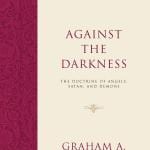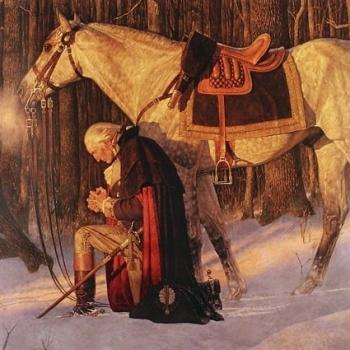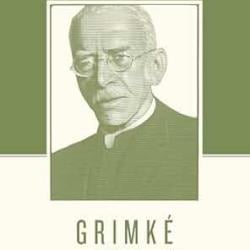This post is part of a series walking through the first volume of Abraham Kuyper’s Common Grace.
Just who was this shadowy Old Testament figure of Melchizedek? I certainly don’t know, but Abraham Kuyper had some interesting thoughts on it.
In Abraham’s meeting with Melchizedek, we see the connection between Abraham and the nations. This meeting must be read through the filters of Psalm 110 and Hebrews 6-7. In Hebrews 6, we are told that the interaction between the two is the point where we leave behind “Elementary doctrine” and “go on to maturity.” The elementary doctrine is:
- “the doctrine of God
- the doctrine of repentance
- the doctrine of baptism
- the doctrine of laying on of hands
- the doctrine of the resurrection of the dead, and
- the doctrine of eternal judgment.” (394)
The mature doctrine, by contrast, is a right understanding of Melchizedek and what it means. What we often are taught (at least what I’ve heard taught, in any case) is that this means that the mature believer will have a proper understanding of how to read the Old Testament. This is a part of the truth according to Kuyper, but not all of it. Specifically we need to understand how the creation order upholds redemption and will someday be restored. This reality ought to shape our view of Christianity, the church, and the world.
“But what the apostle reveals to us here… puts [to us] the truth that redemptive revelation bears only a temporary character; that it comes only to disappear again that that, when one day redemptive revelation will have realized its full content, the original creation ordinance, now completed and made unassailable, will in the eternal kingdom of our God be made the everlasting mode of all things in heaven and on earth.” (396)
But how does Hebrews demonstrate this? According to Kuyper Melchizedek shows us that the worship of God persists in Canaan in Abraham’s time–though later it would be extinguished. In other words, not only was there not a cultural and political separation (as argued in the previous chapter), but there was not even a total religious separation.
(We might be tempted to say that Abraham’s sending for a wife from Chaldea for Isaac is a good example of the separation between Abraham and the world, but Kuyper thinks that this was cultural rather than religious.)
This meeting between Abraham and Melchizedek–the ancestor of a future king of Jerusalem and the present king of Jerusalem–would later be remembered by David with Melchizedek being the superior figure in the meeting. He was also, contrary to some claims that he was a pre-Incarnate Jesus, a real historical king and priest of the true God. Kuyper thinks this is all the point that is clearly explained in Hebrews 6-7: that common grace is the foundation and culmination of particular grace:
“Without particular grace both the world and human nature would have remained in death and destruction. But on the other hand, particular grace has no other purpose or calling than to save both that world and our human nature in the full universalistic sense.” (401)
But what about all those passages telling Israel to stay away from other nations? Shouldn’t that be a sort-of model for the church? More on that in the next chapter.
Dr. Coyle Neal is co-host of the City of Man Podcast and an Associate Professor of Political Science at Southwest Baptist University in Bolivar, MO













